Victorian doctors speak out about the shocking cost of Australia’s hospital violence epidemic
In the wake of violence against hospital staff, including many cases in Victoria, a spike in compo claims is expected from doctors and nurses who say the issue is being ignored. WARNING: GRAPHIC CONTENT
National
Don't miss out on the headlines from National. Followed categories will be added to My News.
WARNING, GRAPHIC IMAGES: An explosion of compensation claims are predicted to rip through Australia’s hospital network as medical staff face some of the toughest rates of workplace assaults in the country.
In wake of the extreme violence, campaigners are calling for a specific hospital security force with greater intervention powers, health emergency specific training and 24-hour patrols.
Official figures show hundreds of doctors and nurses are collectively being paid out millions of dollars after being hurt in violent attacks as the system continues to fail to protect them from harm.
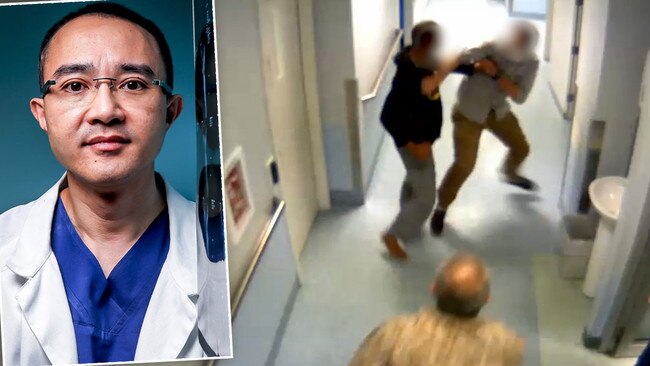
THE PRICE OF VIOLENCE
Federal government data shows hospital workers have the third highest rates of compensation for assaults, behind public safety workers, such as police, and residential care workers.
In a special News Corp investigation, workers across the country have revealed their extreme frustration at what they allege are hospitals’ lack of care and poor security.
The mounting crisis comes after a man was jailed last month for killing a respected Melbourne heart surgeon, Patrick Pritzwald-Stegmann, 41, who had asked him to stop smoking near a hospital entrance. Mr Pritzwald-Stegmann was punched with such force it knocked him out. His killer was the first person in Victoria to be sentenced under the state’s mandatory ‘coward punch laws’.

And earlier this month three nurses were injured after a patient stabbed another at Sydney’s Royal Prince Alfred Hospital.
Data from SafeWork Australia, the federal government agency that oversees workplace safety, shows that between 2012 and 2017 an average of 675 compensation claims were approved relating to assaults on hospital staff.
Almost 3400 claims were paid out for mental and physical trauma suffered on the job — at least 1980 were nurses and 65 for doctors.
The agency could only provide a total payout figure for 2015/16, revealing almost $11.6 million was compensated — the equivalent of $2810 per victim.
Hospital-related incidents per hours worked are four times the national average for all professions.

According to the most recent available figures, 610 claims were approved during 2016,17, compared to 660 the year before and 735 in 2014/15.
There were 610 in 2013/14 and 765 the year before.
While 2017-18 figures are still being finalised, Australia’s College of Emergency Medicine president Dr Simon Judkins said instances of staff violence were severely under-reported.
Dr Judkins, who has worked as an emergency doctor for the last 20 years, encouraged more hospital workers to report violent incidents and pursue compensation claims.
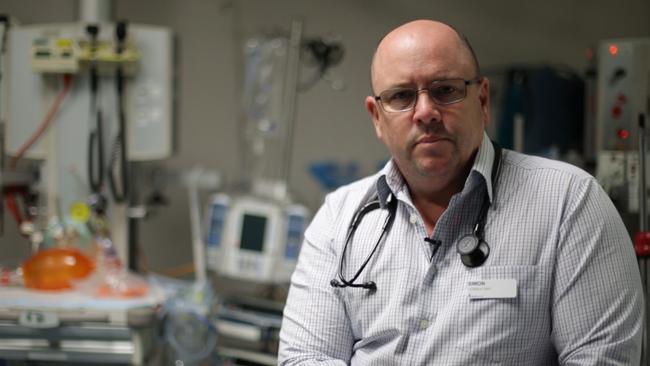
“We don’t want our emergency departments to look like some sort of bunker, (but) we do need to make sure they’re trained, visible and people know they are there,” Dr Judkins said.
“(They) might be dealing with a 14 year-old autistic child one minute, then a 23-year-old intoxicated patient or someone on methamphetamine and then someone with a brain injury.”
He estimated nine out of 10 physicians had been verbally or physically abused at work. His organisation is responsible for training emergency physicians.
“We know that currently, staff under-report incidences of violence or abuse,” he said.
“All staff and patients who have experienced violence within an emergency department should be entitled to compensation for any medical or mental health support that may be required.”
Gerard Hayes, the national president of the Health Services Union who represents public health workers, warned of a trajectory of increasing violence across the country.
He proposed a health-specific licence for hospital guards, warning police were forced to intervene when security was poor or when presumably violent patients needed to be transferred to hospital.

“The hospitals want police to hang around but police say we’ve bought them here and it’s now your responsibility,” he said.
Typical police protocol is for officers to warn hospitals ahead of time so they’re able to organise a guard to help on arrival but sometimes none are available.
This means police are forced to wait — sometimes for hours — to maintain safety.
“Security guards do not have the power of a police officer so they cannot intervene or restrain anyone,” he said.
Mr Hayes could easily recall more than a dozen instances of hospital violence in NSW alone.
“They were just going to work that day, this is just bullsh*t,” he said.
“There will be another incident soon. It’s not a matter of if, it’s when and hopefully it’s not catastrophic.”
STABBED 14 TIMES BUT NOTHING CHANGED

Two years before Dr Pritzwald-Stegmann’s death, neurosurgeon Dr Michael Wong was horrifically stabbed 14 times in 2012 by a crazed patient, who used a small kitchen knife to attack him in the foyer of Melbourne’s Footscray Hospital.
Dr Wong had only just arrived at work for the day when he was rushed to his hospital’s emergency department. Witnesses had to drag his bloodied body across the hospital floor.
“I have stab wounds everywhere, head, chest, arms, legs,” he said.

Dr Wong did not seek compensation, but he said his attack and that of Dr Pritzwald-Stegmann could have been prevented if adequate security had been in place.
He is dismayed that no changes were made when he returned to work three months after his attack: “I feel disappointed and expendable.”
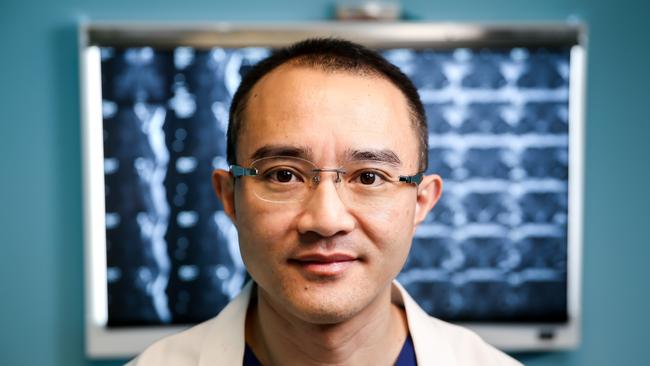
Both Dr Wong and Dr Judkins want a boost in on-site security after hours and weekends.
They join the army of health workers who want dramatic improvements to their workplace safety.
“It is vital to have sufficient staff, particularly experienced and senior staff rostered on at times when the risk of violence is known to be greatest,” Dr Judkins said.
“I would be fearful of my own safety as security in the hospital is not the same job as the police … it’s simply under resourced and undermanned,” Dr Wong said.
A NATIONAL ISSUE
Later this year NSW Health will roll out a new incident management reporting system to make it easier for staff to speak up about violence.
A spokesman told News Corp said this “may result in more incidents being recorded.”
NSW compensation data shows the number of staff assault claims has decreased since 2016, however a 2018 survey of 3612 nurses and midwives in the state found four in five had been verbally or physically abused within six months of the survey.

Twenty-two per cent of staff said they had never spoken out against violence committed against them, almost half who did report incidents said they weren’t satisfied with their employers’ response, and 87 per cent said nothing changed in their department following a violent act being reported. There were 1093 violent incidents against NSW nurses that were a result of communication with patients or visiting friends and family while 607 were a result of frustration with delays.
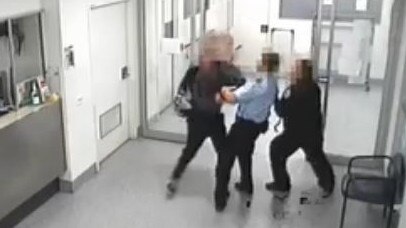
Queensland Health confirmed they have seen an increase in staff reporting incidents after they introduced an online reporting tool and Occupational Violence Incident Response Kit.
“We want to hear every single instance of abuse so we can address them,” a spokeswoman said. The state’s Office of Industrial Relations confirmed 836 Queensland hospital workers had on average 168 compensation claims accepted between 2013-14 and 2017-18 relating specifically to assaults while WorkSafe Victoria said there was 63 claims alleging hospital violence in 2018 alone.
Queensland Police Inspector Paul Ready said he wanted to see medical suites installed in watch houses so nurses can complete assessments of patients that require a police presence there.
“For us it’s not about freeing up time, it’s about making sure everyone is safe,” he said. “We know EDs are busy and traditionally quite tense.”
WA police union president Harry Arnott, who polices the state’s south west, said their officers were forced to wait with medical staff until they were released by a doctor.
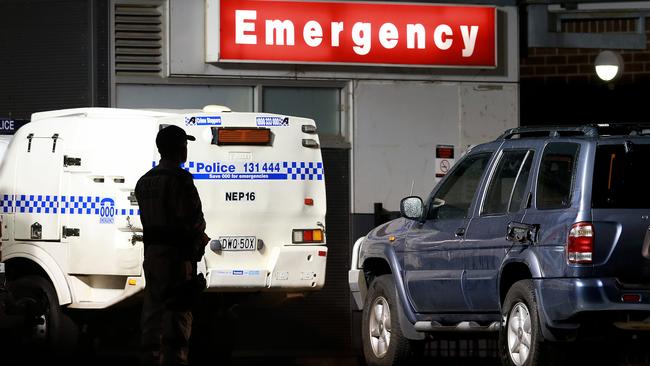
He was frustrated as sometimes officers were made to wait up to two hours before being told they can go.
“Anything that would reduce police waiting around in hospitals would be beneficial,” he said.
“Hospitals need to prioritise assessment of people being escorted by police and have permanent security.”
In South Australia staff are encouraged to report incidents so they are recorded and investigated. A SA Health spokeswoman said 2016-17 had the highest amount of ‘Code Black’ alerts across the state (10554) compared to the two years prior. Code Black is used by staff who find themselves in a potentially violent situation or require preventive measures to de-escalate.
HEALTHIER RESPONSE NEEDED
Queensland Nurses Professional Association secretary Jack McGuire said the issue could be solved at a hospital level if more cash was injected into security staff and training.
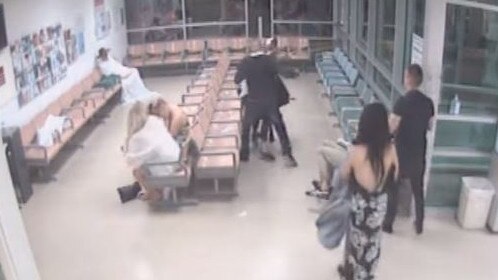
“The security just aren’t up to scratch, unfortunately — they’re more the shopping centre-style security that you would see walking around patrolling a food court.”
MORE NEWS:
MAN IN COURT CHARGED WITH PARK MURDER
BANDITS BEHIND OUR BIGGEST HEISTS
Dr Judkins supported this, adding: “The cohort of people they’re dealing with is different. (You) can’t just have a contractor one minute working in a shopping mall then the next working in a hospital.”
The federal Department of Health spokesman said ultimately it was the employers’ responsibility to provide a safe workplace.
Originally published as Victorian doctors speak out about the shocking cost of Australia’s hospital violence epidemic


